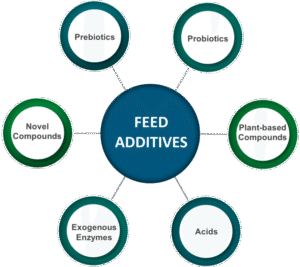Different raw materials are characterised by their amino acid composition.
In addition within a specific type of raw material but between different
samples, differences in amino acid composition may occur as a
result of cultivation and geographic influences. Therefore when mean
tabular values of amino acid composition are used, consideration must
be given to the fact that the actual levels of amino acids in the raw material
may differ considerably from the value given in the tables.
Furthermore, when referring to the different sets of tables for the
formulation of mixed feeds, particular attention must be paid to the
manner in which the animal’s requirements are expressed and how
the tabular values are presented (total as is basis, apparent or true
digestible amino acids basis).
Additional attention must be paid to the units:
— Amino acid content in the raw material expressed in % or in g/
kg of fresh material (as is basis);
— Amino acid content expressed in % or in g/kg of the dry matter
of the raw material;
— Amino acid content expressed in % of the crude protein.
If the crude protein content of the sample deviates from the tabular
value, then the amino acid content shifts in the same direction. Thus,
correlations between nitrogen and amino acid contents are used to
set up predictive regressions. For each amino acids of a raw material,
a slope (a) and intercept (b) can be determined with the equation Y
(% of a given amino acid) = a X(N, % as fed basis) + b. Such equations
are found in literature for a large range of feedstuffs. As an example,
the amino acids composition of wheat can be estimated using
the coefficients presented Table 9

Thank you for reading. Don't forget to subscribe & share!









